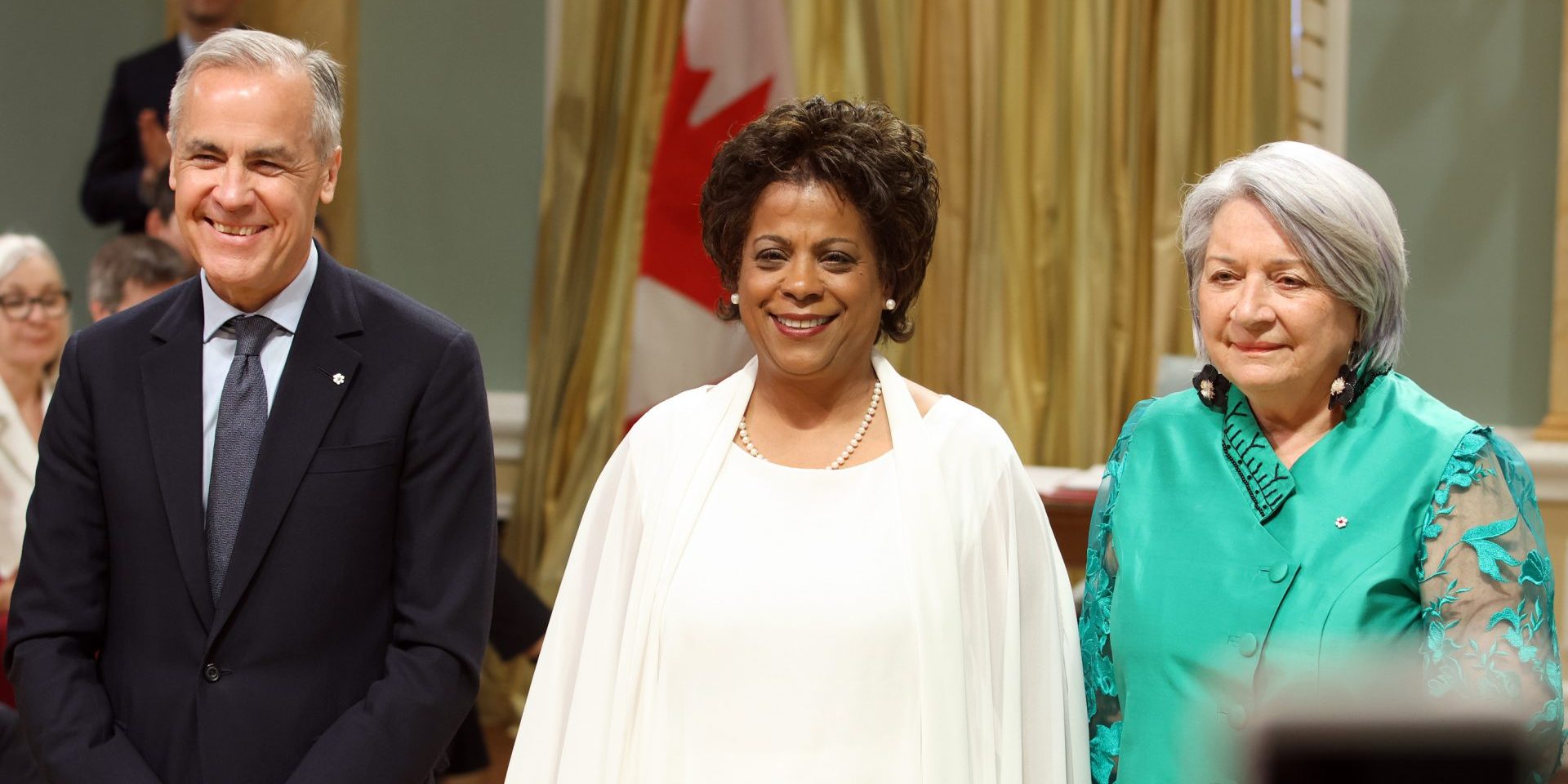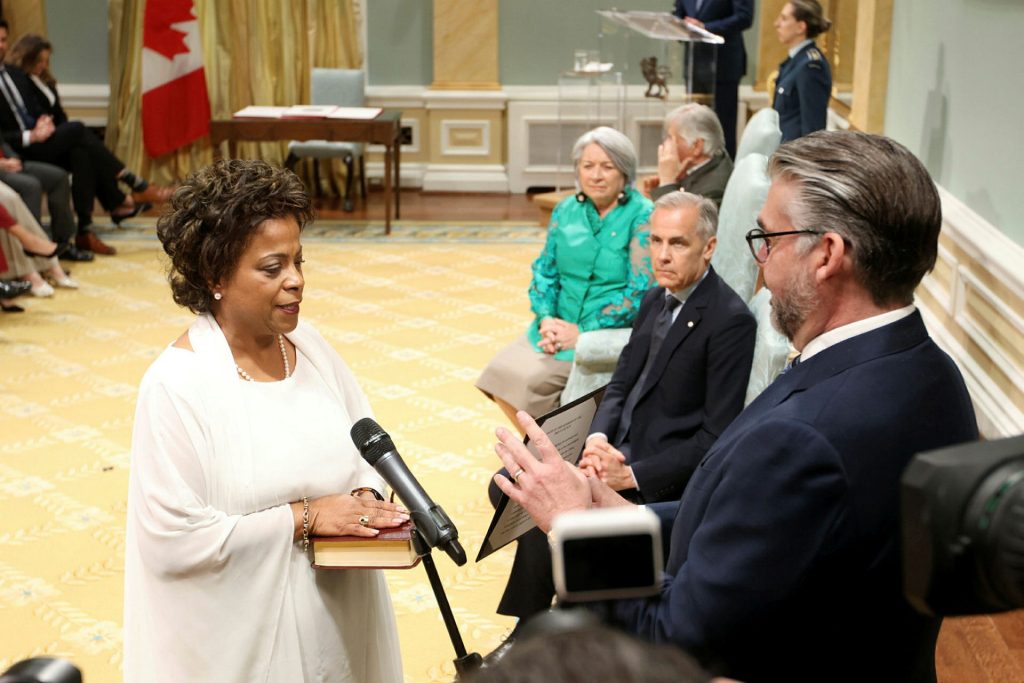Trudeau era’s ‘activist’ health policy moves likely in the rear-view mirror, say consultants

A single mandate letter—with no explicit reference to health policy—and a Throne Speech that was light on the subject likely signifies the Liberals’ plan to return to basics and use action on health as a way to fulfill other more well-known policy aims, say consultants.
“I think it’s a recognition that the activist health policy days of the [Justin] Trudeau era are likely in the past,” said Peter Cleary, principal at Santis Health, in a phone interview with The Hill Times on May 28. “This is going to be a retrenchment of how the federal government has traditionally supported health care with provinces and territories.”
“Health care remains in the frame—just from a cost-of-living angle,” said Kevin den Heijer, a senior consultant at EnterpriseHealth, in an email to The Hill Times on May 28.
Since the Liberals under Prime Minister Mark Carney (Nepean, Ont.) won the April 28 election, Canadians have learned more about his government’s priorities in the form of a single mandate letter that was provided to his cabinet and published online on May 21. The solo letter broke away from former prime minister Trudeau’s tradition of supplying each of his cabinet ministers with a letter that was specific to their role and department.
Although some commentary has lauded the focused nature of the solo mandate letter and the move away from multiple lengthy to-do lists, there is also much that is unsaid about priorities that don’t directly fit into the categories of “economy,” “security” and “sovereignty.”

Canadians’ second look into the federal government’s priorities occurred on May 27, when King Charles III read the Throne Speech from the Senate Chamber. The speech did include specific references to health policy, including that the government will protect existing pharmacare and dental care programs.
“The continued support for dental care and pharmacare is less about system reform and more about direct affordability for Canadians. It’s a noticeable shift from previous years, where health care was more prominently featured as a policy domain in its own right,” wrote den Heijer, who was a Liberal staffer to Patty Hajdu (Thunder Bay-Superior North, Ont.) when she was health minister.
Some significant shifts in health policy—such as the move to legalize cannabis in 2018 and an attempt to reduce pharmaceutical drug prices through regulatory changes—occurred under the Justin Trudeau Liberals.
Trudeau’s government also launched new national programs for pharmacare and dental care though those were specifically conditions of the supply-and-confidence agreement with the NDP that was in place between March 2022 and September 2024.
Carney has promised to maintain those programs.

The Canadian Dental Care Plan, which has been implemented in phases since 2022, is now fully available to all eligible Canadians.
On the other hand, the pharmacare plan is limited to specific diabetes medications and contraception. Only three provinces and one territory have signed up for the bilateral funding that’s meant to ensure these products are covered by provincial and territorial public plans.
The previous health minister, Kamal Khera, told Hill Times Health on March 22 prior to the election call that a Liberal government under Carney’s leadership would continue to negotiate bilateral agreements with provinces and territories that wanted to sign on. But Carney himself has not provided any signals that the program could expand beyond coverage for diabetes medications and contraception. Khera was not successful in her re-election bid.
First-time MP Marjorie Michel, who succeeded Trudeau in his Papineau, Que., riding on April 28, was named the health minister on May 13. Although new to the House of Commons, Michel is a well-known Liberal operative having served as a political staffer for nearly 10 years. This includes more than three years as Trudeau’s deputy chief of staff. Before Michel was announced as the candidate for Papineau this past March, she was the Liberals’ deputy campaign director. She has a master’s degree in social work, and organizational psychology.
“Based on all the language we see, it’s maintaining what the commitments have been to date, which is the two indications [for diabetes and contraception], and they would likely seek to find further deals with provinces that haven’t signed yet,” said Cleary about pharmacare. Cleary was once a Liberal staffer in then-health minister’s Jane Philpott’s office.
“How aggressively will they pursue those? That is something to be determined.”
Grits promise shorter timelines for public coverage of new drugs
Although the Throne Speech and mandate letter were sparse on details, the Liberals’ election platform dedicated close to four pages to health plans. This includes a promise to reduce the amount of time it takes to add medicines to public plans.
A new drug in Canada must go through multiple reviews before a government at the federal, provincial, or territorial level will consider paying for it.
The process starts with Health Canada, which reviews the pharmaceutical company’s application to ensure a new medicine is safe.

Bill Dempster, president of 3Sixty Public Affairs, said that ‘tough conversations’ will have to happen if the government wants to bolster Health Canada’s regulatory resources. Photograph courtesy of Bill Dempster
Separate reviews are also conducted by two federally funded but independent groups. The Patented Medicine Prices Review Board looks to see that the price of a drug is not considered excessive by the board’s standards. Then Canada’s Drug Agency (previously known as the Canadian Agency for Drugs and Technologies in Health) conducts a health technology assessment to advise as to whether provincial and territorial public drug plans should provide coverage.
Drug pricing negotiations that precede the public coverage of a new medicine are conducted by the pan-Canadian Pharmaceutical Alliance, whose members represent federal, provincial and territorial governments.
Information published last month by Innovative Medicines Canada states that this process lasts two years, and that doesn’t include the time it takes for Health Canada to approve new drugs. Private insurers add new medicines to their plans in less than one year following approval from the federal health department.
The regulatory function of approving medicines is a traditional role for Health Canada, Cleary noted.
He said the Liberal Party’s promise to improve that process is a reflection of the mentality of “let’s get back to the basic business.”
But even getting back to basics could come with a cost, which will have to be confronted by a government that is intent on cutting operational spending. The Throne Speech states that the government wants to bring that type of spending growth down to less than two per cent from previous levels of nine per cent.
“Hundreds—even thousands—of scientists and other evaluators work in Health Canada. Are they going to need some more investments to deal with all the new innovations that are coming forward to be evaluated as regulators?” said Bill Dempster, president of 3Sixty Public Affairs, in a phone interview with The Hill Times on May 27.
“If you’ve got a spending cap of two-per-cent growth—and if it’s even less potentially for health because they want to spend more, say, in the Canadian Armed Forces or [the Department of National Defence]—those are going to be some tough conversations around the cabinet table.”
“You’re in a situation where there’s not enough resources at the moment in order to keep up with the number of drug submissions coming in,” said Cleary.
Fitting health into the national sovereignty puzzle
The Carney government has been clear that its focus is on building a stronger country that can operate more independently. This follows tensions with its largest trading partner, the United States, amid President Donald Trump’s threats to the trading relationship and to Canadian sovereignty overall.
Cleary said he sees multiple actions that could be taken on health policy to contribute to the goal of protecting Canadian sovereignty, including the diversification of supply chains and improving labour mobility.
That includes taking into account whether Canadian firms are contributing to the global medical product and device market, and improving the ability of health care professionals to practice across provinces and territories, according to Cleary.

During the election campaign, the Liberals specifically promised to work on labour mobility—including for health care professionals.
With a mandate letter and Throne Speech shedding light on health, the Liberals’ election platform with its more expansive commitments to health policy will be the “touchstone” for stakeholders going forward, said Dempster.
The platform “talks about building critical health infrastructure, which contributes to the economy, and expands access to health care across the country. Health is mentioned almost 100 times in the platform, and it’s a focus especially in federal jurisdictions like Veterans Affairs, the [Canadian] Armed Forces and Indigenous health,” he said.
As for upcoming signals of the Liberal government’s commitment to health policy, den Heijer said that the 2025 budget, which has been promised for a fall reading, and the first ministers meeting taking place on June 2 in Saskatoon “will be key litmus tests for how much depth and funding the government will attach to the broader health file.”
tsanci@hilltimes.com
The Hill Times






 LICENSING
LICENSING PODCAST
PODCAST ALERTS
ALERTS













